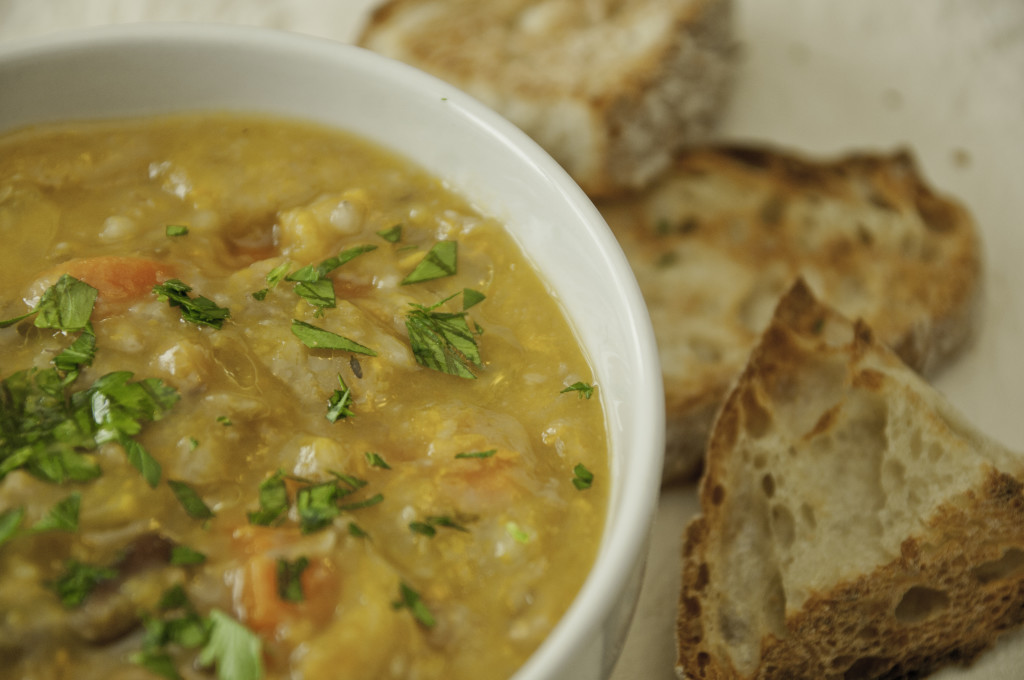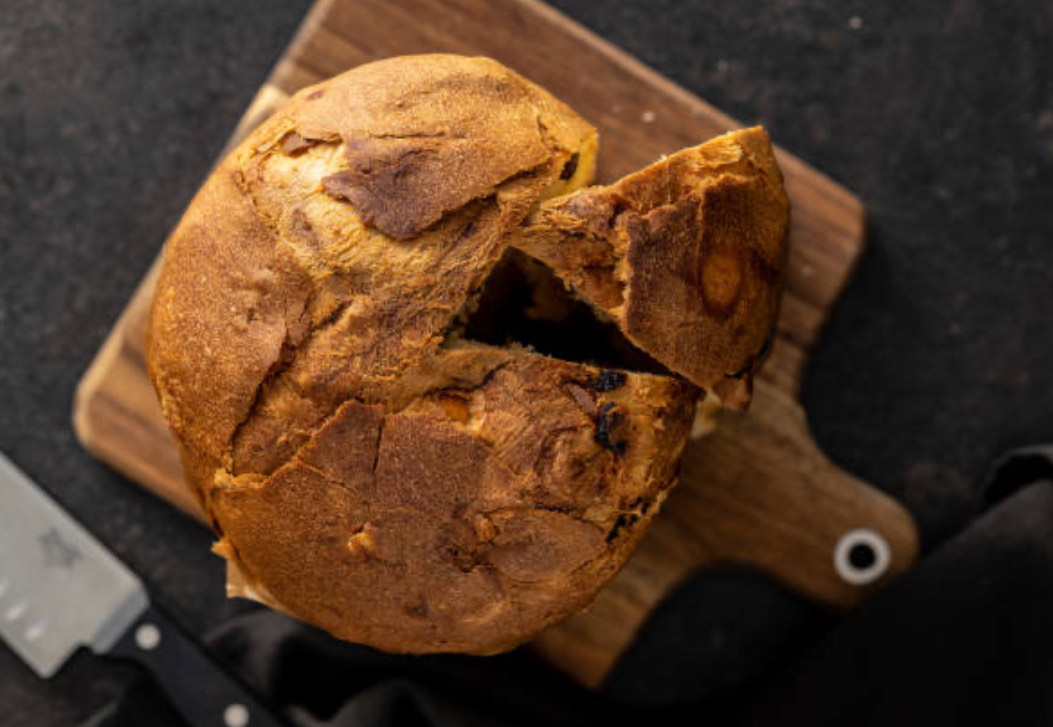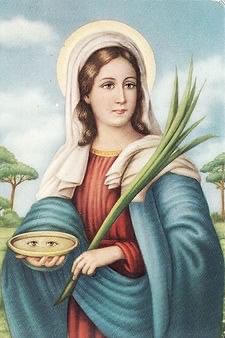Whether thick and hearty, clear and light or pureed and silky, nothing says comfort on a cold day like a bowl of piping hot soup. Translated from the Latin suppa meaning “bread soaked in broth”, this restorative dish has been in existence since 6000 BC. A global staple, the word soup has even evolved into a figure of speech, for example “Soup’s On” a common phrase used to say, “Dinner’s ready”.
At dinner or otherwise, when it comes to ladling out servings of this common primo, Italians have got a number of delectable variations. Many regional soups have humble beginnings as peasant food, made by utilizing inexpensive ingredients as well as stretching out costly ones. A prosciutto bone or parmigiano rind is often as valuable as gold when it comes to flavoring a bubbling broth. Recipes vary according to region; rice and pastas are features of Northern soups while bean soups are a Tuscan specialty; tomato and garlic are common flavoring agents in the South and coastal regions create soups using seafood. Ingredients in season also play an important role, dried beans and grains are used in winter when vegetables aren’t readily available, while tomatoes, artichokes and green beans are used in summer and wild mushrooms are often the fruits of autumn soups.
Perhaps the most recognizable of all soups, an Italian signature dish, the “big soup”, minestrone. Every region has its own take on the tomato-based soup that contains a variety of mixed vegetables (typically carrots, celery, and potatoes), beans and small pasta such as maccheroni. Recipes for this beloved brodo are plentiful and incorporate regional trends; coastal regions add shellfish; while inland regions incorporate sausage or other meats. In Veneto for example, minestrone is rendered incredibly creamy thanks to a healthy number of potatoes and it also incorporates spinach, beet greens and fennel, while in Liguria, it is made with radicchio and of course pesto, in Abbruzzo it is commonly made with chestnuts and in Sardinia with chick peas and pork rind.
Similar to minestrone, but not as brothy and containing no pasta, is the ribollita of Tuscany. This pappa is actually the reincarnation of minestra di pane. A wonderful use for crusty Tuscan bread, this robust winter soup is made with cavolo nero (kale) and a variety of other winter greens, cabbage and cannellini beans. The minestra is layered and absorbed into pieces of bread making a hearty potage. When it is served immediately it is referred to as bread soup, however when it is reheated or re-boiled and served the next day (incidentally only making it better) it is called ribollita.
From southern Italy where seafood is abundant, comes the zuppa di pesce. This traditional seafood soup is an opportunity to use the freshest local ingredients and typically utilizes the varied catch of the day, firm textured white fish, shellfish, tomato, herbs and white wine.
Aside from being mere sustenance, soups are also celebratory. Take for example the Roman rag soup otherwise known as stracciatella. This flavorful broth featuring shreds created from beaten eggs and cheese is often served in a meal on Easter Sunday. Served up at Christmas in Lazio and Campania, minestra maritata, or “wedding soup”. The marriage however has nothing to do with weddings but more so refers to the marriage of ingredients: meat broth, meatballs, cooked greens and pasta. The wedding soup though, was often served to newlyweds to give them strength for their first night.
Other common bowlfuls across the peninsula include jota, the bean and sauerkraut soup from Trieste; supa de scigol, a Milanese version of onion soup featuring Taleggio (the runny cheese from east of Lake Como); and Zuppa Gallurese from Sardinia, prepared in layers resembling a casserole, consisting of bread, savoy cabbage, provolone, pecorino and chicken stock.
A discussion on soup would not be complete without a look at the recipe considered the cornerstone of Italian soup-making, pasta e faggioli. Classic peasant food from central Italy, the recipe travelled easily with early immigrants and became a well-known starter in North America as well.
No matter the soup, what’s important to note is that each ingredient enhances the others; each batch has its own characteristics; and it needs time to simmer to reach full flavor. Buon Appetito!
Minestrone
- 2 liters simmering broth (beef or vegetable)
- 1/2 cup dried beans (individual bean or mixed)
- 1 clove of garlic, crushed
- 1 bunch of chopped parsley
- 1 carrot diced
- 1 celery stalk diced
- 1 zucchini diced
- 1 small onion, minced
- 1potato, diced (sweet potato can be used for added color and flavor)
- 1/2 cup of tomato sauce, or canned plum tomatoes
- Salt and pepper to taste
- Boiling water
- Grated Parmigiano
- ½ cup Rice or short pasta such as maccheroni or ditali (optional)
Preparation:
Soak the dried beans overnight.
Place all the vegetables, beans and broth in a large pot and simmer and allow to thicken, for approximately 2 hours. Check the beans and potatoes for doneness and check for seasoning.
At this point rice or pasta can be added to cook in the minestrone, for approximately 20 minutes. If the soup gets took thick add some boiling water.
Serve the soup with the grated cheese and a drizzle of olive oil.
Cooking note: Minestrone also works well made in a slow cooker. Soak the beans overnight then place them in a crock pot along with all the other ingredients, then set and forget.
Photography by Venus Gennaro








